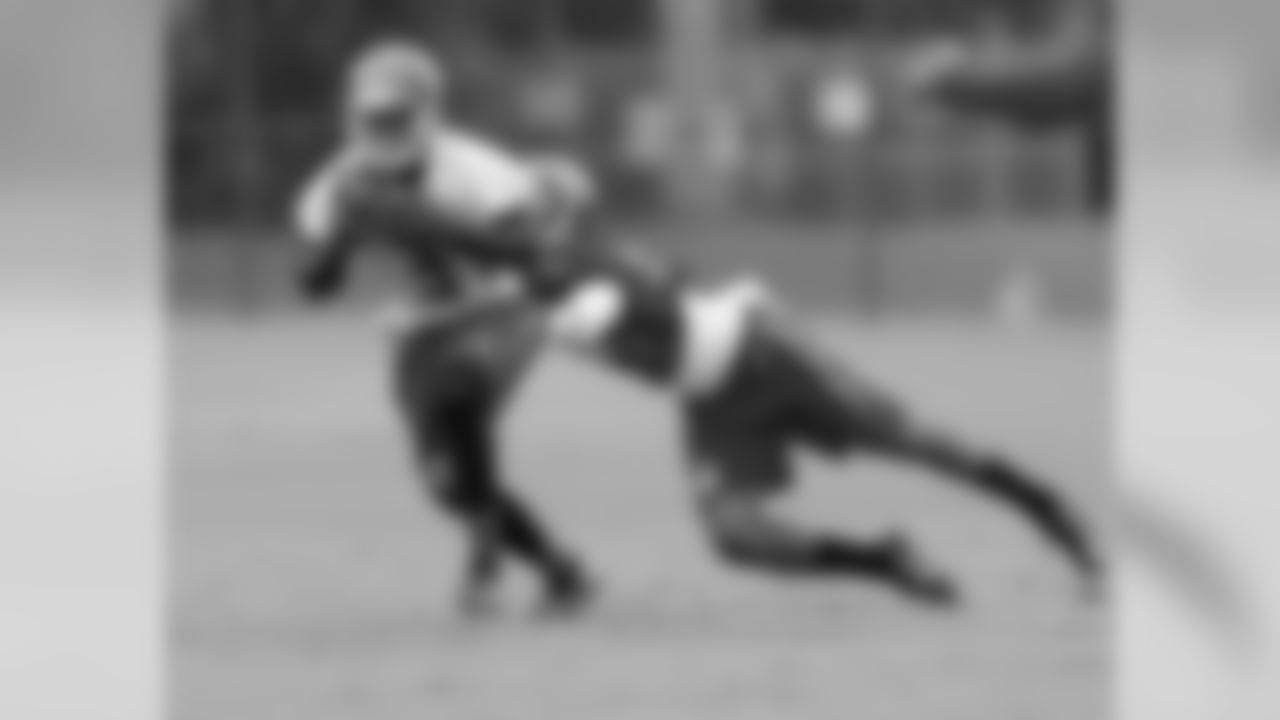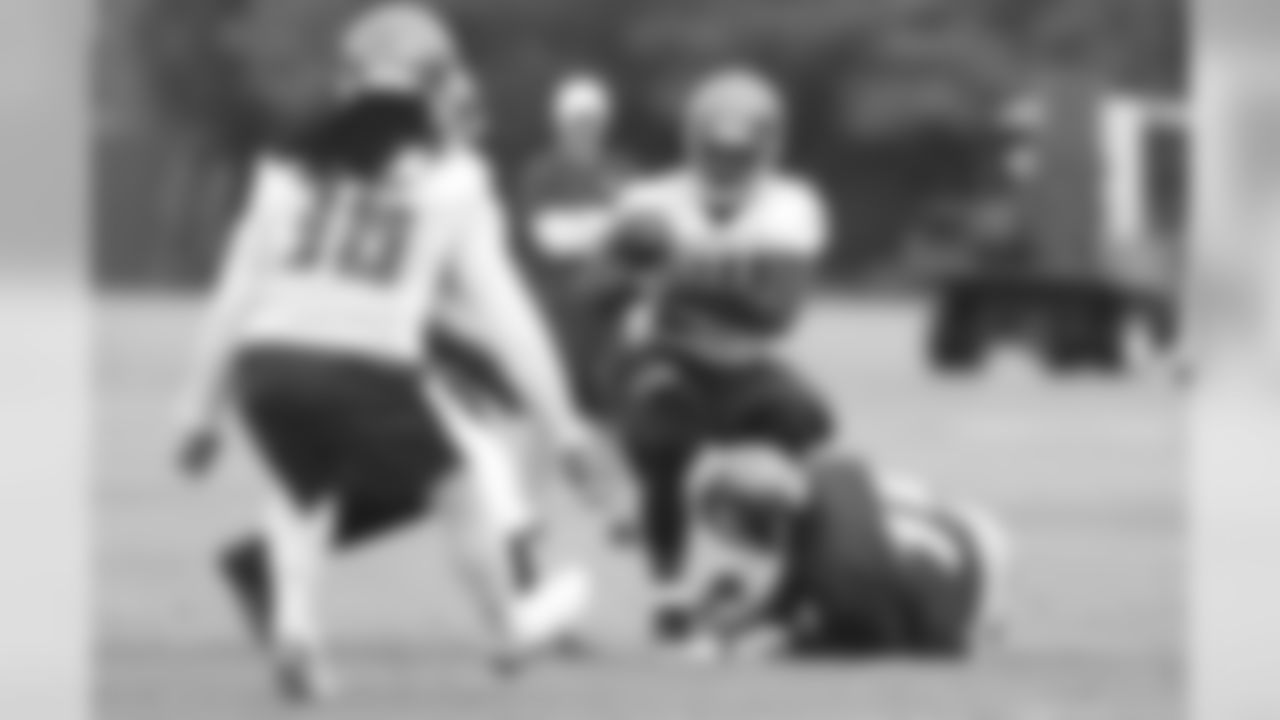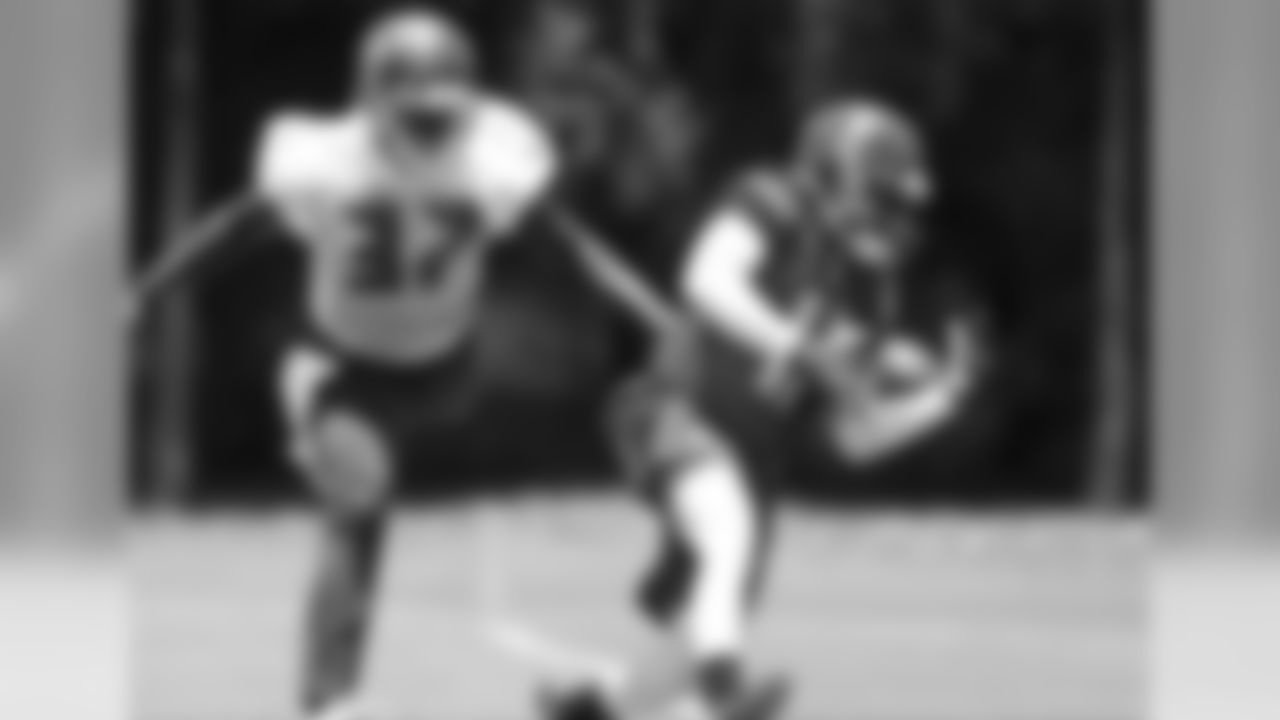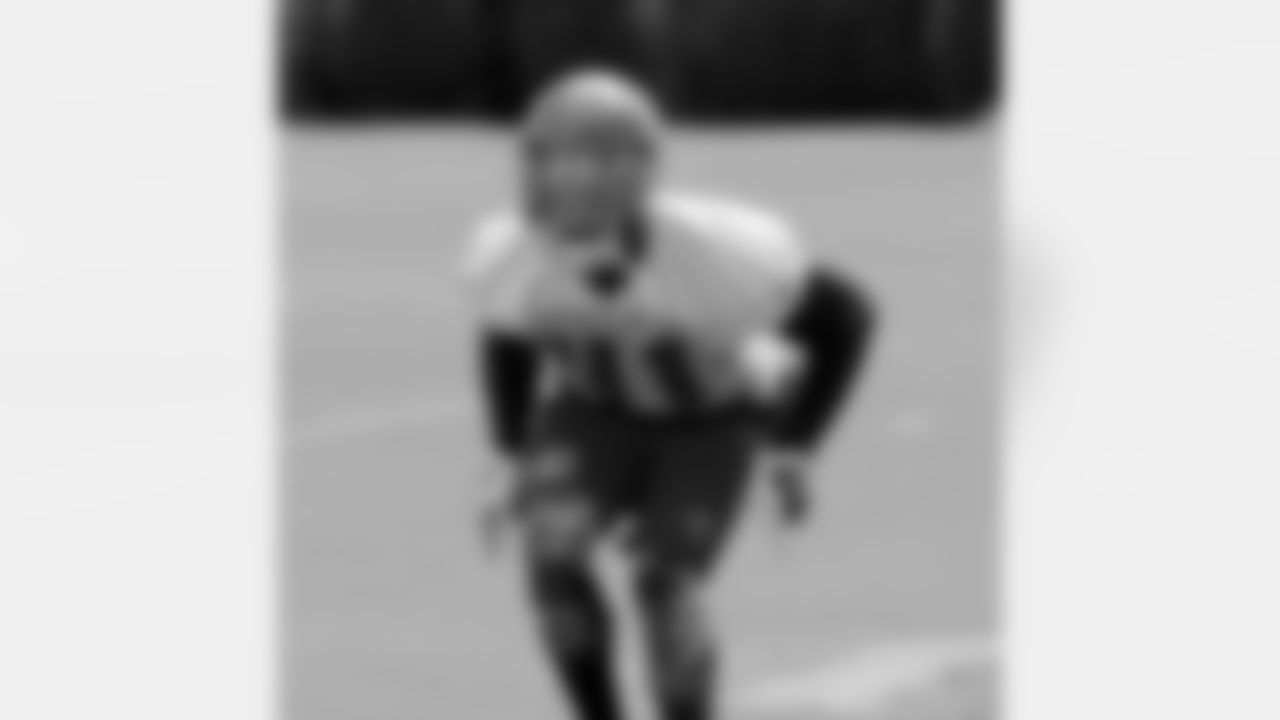On Monday, the beginning of the final work week before training camp opens, the Tampa Bay Buccaneers re-signed defensive lineman Da'Quan Bowers. On Tuesday, the team made another small tweak to its camp roster, placing safety Derrick Wells on the active/non-football injury list.
Especially when bloated to 90 players for the start of camp, an NFL roster is rarely static, so this week's last-minute moves hardly comes as a surprise. In fact, the Buccaneers' roster actually stands at 89 players at the moment after the release of linebacker Jared Koster and the move of cornerback C.J. Wilson to the reserve/retired list, so it's very likely that the pre-camp tweaking isn't done.
As an undrafted rookie who got a contract after participating in the May rookie camp as a tryout player, Wells is probably not a familiar name to most Buc fans. Fittingly, the roster move applied to this young defensive back out of the University of Minnesota has some obscure elements, as well.
Photos of the defensive backs on the Bucs' roster heading into training camp.
































The "non-football injury" part of the designation is exactly what it sounds like. Teams use the NFI lists when one of their players is unable to play or practice due to an injury that was not suffered in a game, on the practice field or during offseason conditioning at the team facility. The Bucs did the same thing with defensive end Ronald Talley shortly before the start of training camp last year.
The less obvious part of this designation is the "active" part, but it's actually a very important distinction from the closely related "reserve/non-football injury" list (emphasis added). When a player is placed on the active/NFI list, he still counts against the roster limit (90, at the moment) and he can return to practice at any time, with the team merely removing that designation. That's what happened with Talley; he went on the active/NFI list on June 24 and came off it in order to start practicing on August 3, just a few days into camp.
So why even bother with the active/NFI designation (or the somewhat similar choice of active/physically unable to perform)? It's used to create an option down the road. If a player goes on active/NFI or active/PUP at the start of camp, he can later be transferred to reserve/NFI or reserve/PUP if his recovery takes longer than the team initially hoped. This decision has to be made before the cut-down to the regular-season limit of 53 players.
There are 37 player-status designations to choose from when updating rosters on Buccaneers.com and other team sites. The majority of players are marked as "active," though "reserve/injured," "practice squad" and others get used more often once the regular season begins. A few of them are rarely needed, such as "reserve/drafted; signed in another league," or "reserve/military." Others, like PUP and NFI, become well-known parts of the league's abbreviated lingo, even if some of the nuances of those designations aren't widely understood. In Wells' case, the important thing to keep in mind is that the team chose the active version of NFI most likely because it expects him to be able to practice at some point during training camp.






































